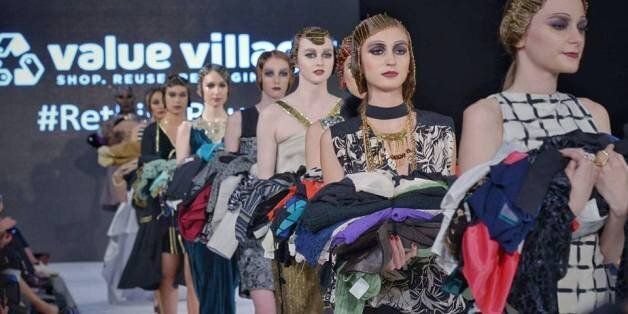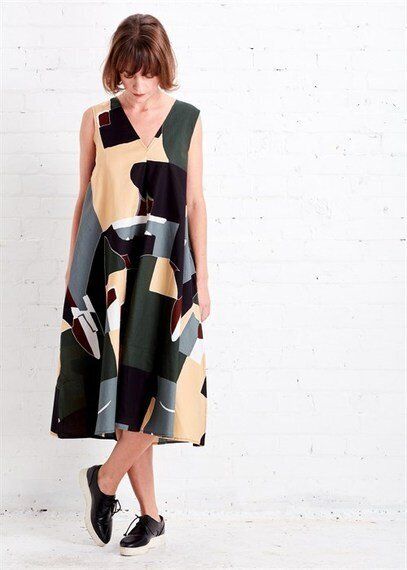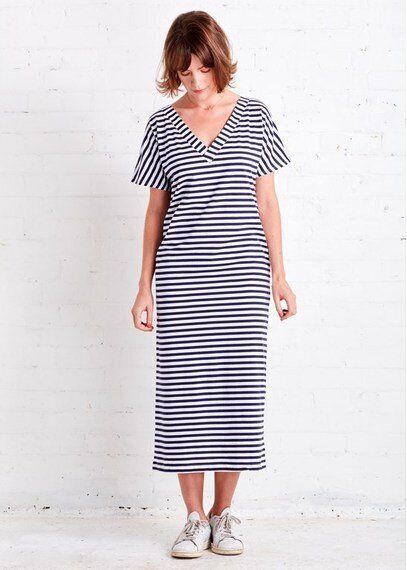
In the lead up towards the fourth anniversary of the Rana Plaza tragedy and Fashion Revolution week ethical and sustainable fashion is once again a hot topic of conversation. So why aren't more people shopping responsibly? As an ethical fashion retailer at Gather&See it's a question I ask myself frequently and part of answer has to be that people don't know where to start. With that in mind we have put together five simple steps to help. It is time we stopped passing the buck and expecting the fashion industry to change without making changes ourselves - it is time we chose style and substance, not the former over the latter.

Image Credit: Gather&See
1. Do Your Research - Who Made Your Clothes?
Start at the beginning and ask yourself what is the provenance of this piece of clothing? The Fashion Revolution campaign is built around what should be a simple question - "Who made your clothes?".The scary thing is that not only do we as consumers not know, but in many cases big retailers don't know themselves. Which makes it impossible for them to assure us that men, women, even children have not been exploited in order to make that item as cheaply as fast fashion demands.
Clothing supply chains are long and murky. Take some time to search out brands that are transparent and provide you with the information you need to make an informed decision. Choose Fair Trade items so you can be sure that the farmers, craftsmen and seamstresses who have made your clothes are getting a fair deal. What's more this is a feminist issue - more than 80% of garment industry workers are female - we need to stand in solidarity and insist that they are respected and treated fairly.

Image Credit:Gather&See
2. Material Girl - Choose Fabrics With Care
Take a look at the care label to find out what's in your clothes. Clue: anything starting in a 'poly' isn't going to be eco friendly. Choose organic or sustainably produced eco materials like Tencel and Modal to limit the effect and send a message to retailers to clean up their act.
A study of organic cotton in one region of India, commissioned by PUMA found a 40% reduction in global warming potential, 72% lower primary energy demand, and lower water consumption. Not only that, the farmers and workers involved in production are not exposed to the harmful chemicals that regular cotton growing demands. The benefits of choosing safer, more eco friendly materials are clear for all to see.
3. Waste Not Want Not - Extend the Lifetime of Your Clothes
2.5 billion pounds of clothing ends up in landfill every year. That's an astonishing amount. Our wardrobes are bigger than ever before and we wear each item less. Fast fashion has led to consumers viewing fashion as a disposable commodity and it is high time that changed.
A few simple steps help extend the life of your clothes so you don't have to add to problem. Firstly, wash them correctly. Most of us wash our clothes too often and at too high a temperature. Check the label, turn the dial down, hand wash where you can. A little love can go a long way. When the inevitable does happen and a button comes off or a zipper goes - repair rather than throw away. You'll be surprised how simple a little sewing can be, who knows you might even enjoy it.
Lastly just because you aren't into something any more doesn't mean someone else won't be. Re-home your unwanted clothes. Shopping for second-clothing is fun, cheap and sustainable. There are now several websites which enable to sell on your cast offs as well as hundreds of local swap sales all over the place so there really is no excuse.
4. Buy Less, But Better - More Wears Per Spend
This is a great mantra to go by in many areas of life, but especially when it comes to our wardrobes. We have too many clothes - if you are honest with yourself, what percentage of what you own do you actually wear? So make an effort to cut down and make your money go further.
Wears per buy is a good way to think of it. Are you really getting value for money? Build a capsule wardrobe full of pieces that can be mixed and matched and made from quality materials that will stand the test of time. A perfectly cut organic cotton shirt or a pure virgin wool coat that will be a pleasure to wear and that you will treasure is worth so much more than five cheap tops that you'll wear once and forget about.
Take time before making a decision to buy something - how often you will wear it, what does it go with in your wardrobe, do you really need it? It's just about balancing the want and the need. This isn't to take away any of the joy of shopping - quite the opposite - when you finally get your hands on something you've been lusting after for some time the reward will be even sweeter. A far cry from the short-lived sugar high you receive from a cheap impulse buy.

Image Credit: Gather&See
5. Get Personal: Support Small Scale Producers and Independent Makers
Get to know the story behind a brand, learn its history and appreciate its heritage. In supporting small scale brands who work with skilled craftsmen and artisans you are helping to keep traditional techniques alive.
Seek out limited collections and handmade pieces. To wear something that is one of a small run or even handmade is something truly special and something that we need to protect. Small fashion labels who run their own production facilities and who know their workers individually are able to maintain tighter control and ensure their principles and values are held strong throughout. Traceability is key.
Taking time to learn about how these brands produce their goods will make wearing them all the more enjoyable. Think of it as building a relationship with the brand, even with the piece of clothing. Supporting these brands ensures their survival, giving us an alternative choice to mass produced. A choice to be different and to demand better. Now, more than ever we need to protect diversity and the luxury of being able to choose an alternative.
